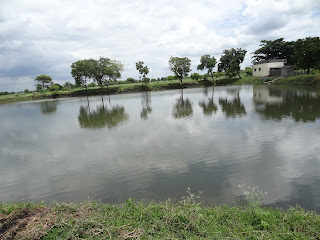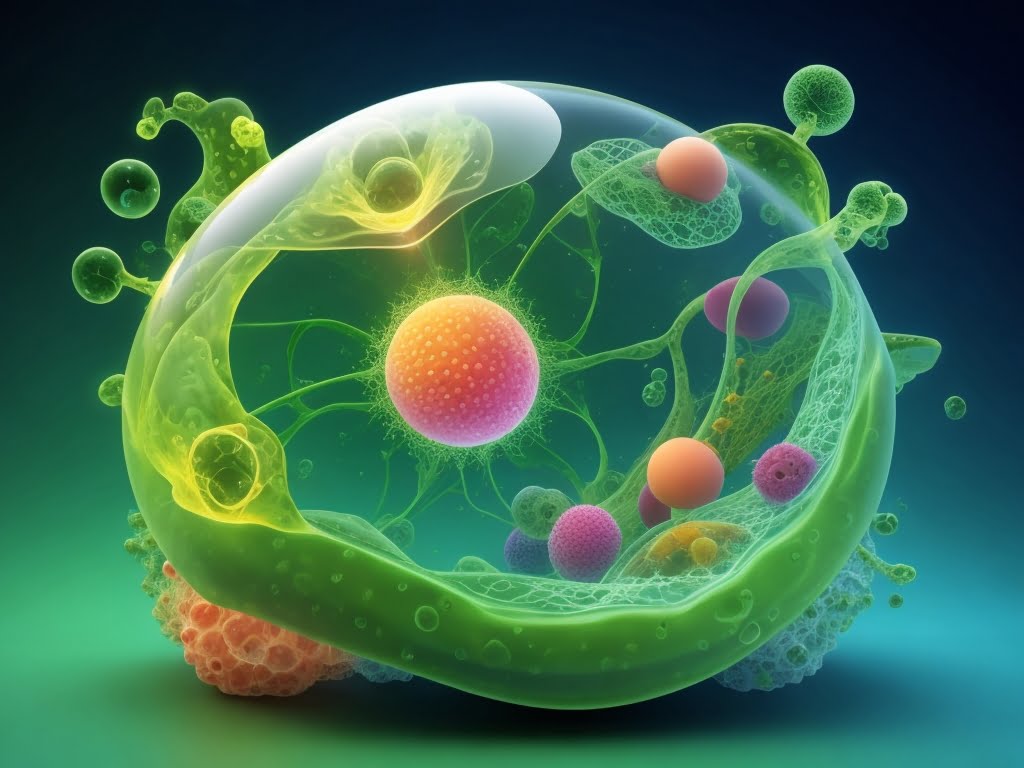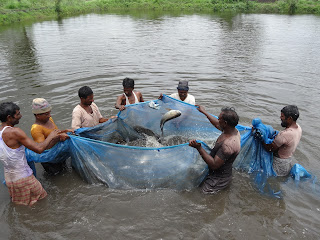Marine water fishery: India has an extensive coastline area of about 8041 km and EEZ- Exclusive Economic Zone is about 2.02 million sq.km. Therefore India has occupies area about 20.8% of the world ocean and 8.2% of the global catch. Today it contributes about 46% of the total catch of the country. Hence, there is much scope for increasing efforts to exploit marine resources of India for the capture fisheries.
Stratification of marine habitat- Marine water fishery:
The stratification of marine habitat includes horizontal and vertical stratification.
Horizontal stratification:
The horizontal stratification consisting of pelagic region and benthic region
1. Pelagic region:
It includes the entire water body of pelagic surface. It is subdivided into two regions, such as nerictic zone and oceanic zone. ‘Marine Water Fishery’
 |
| Marine water stratification |
Nerictic zone:
The shallow water region of the sea shore is called nerictic zone. It is situated in the continental shelf. It extends up to a width of 16 to 240 km and to a depth of 200 meters. The nerictic zone is connected with the land (seashore) and much more factors of terrestrial environment has influence it.
Oceanic zone:
It refered to the open sea beyond the continental shelf. The entire water body remaining beyond the depth of 200 meters constitutes the oceanic zone. ‘Marine Water Fishery’
2. Benthic zone:
It consists of the floor of the sea it is subdivided into two regions, namely i. Littoral zone ii. Deep sea. Littorial zone is further subdivided into two regions, namely eulittorial zone (intertidal) and sublittorial
zone. The deep sea consisting of three regions like- abyssal, bathyal and hadal.
 |
| Marine water stratification |
Vertical stratification:
Based on the penetration of light, the oceanic zone is divided into three strata. They are the upper euphotic zone, the middle disphotic zone and the lower aphotic zone. The euphotic zone is the lighted zone and it extends to a depth of 80 meters. The disphotic zone extends from 80 meters to 200 meters. This region contains diffused light. The aphotic zone extends beyond 200 meters with complete absence of light in this region. ‘Marine Water Fishery’
Groups of Marine water fisheries
The marine fishery of India is broadly divided into two groups.
- Coastal fisheries or inshore fisheries
- Deep sea fisheries or offshore fisheries
Coastline fisheries:
Coastline fisheries production is higher than the deeper fishery. It has about 1200 landing centers on the
coastline. Further coastline area has divided into two fisheries
- East coast
- West coast
The west coast much more productive than the east coast of India because ecological characteristic is more suitable for faunal diversity. ‘Marine Water Fishery’
For convenience of fishery statistics, the east & west coast of India is divided into 12 zones as follows
• West Bengal & Orissa
• Andhra coast i. south part of Gopalpur to north part of Vishakapatnam
ii. South of Masulipatnam to masulipatnam
iii. South of Masulipatnam to North Pulicat
• Coromnadal coast i. Pulicat lake to Cuddalore
ii. South of Cuddalore to Devipatnam
• Pak Bay and Gulf of Mannar
• Kerala and south Malabar – Cape Comorin to Ponnani river
• Malabar and south part of Kanara – North Ponnani to Mangalore
• Konkan coast from North Mangalore to South part Ratnagiri, Maharashtra.
• Maharashtra and Gujarat coast- Ratnagiri to Broach
• Kathiawar coast
First seven coastal zone are included in east coast of India and remaining are the west coast. The exclusive economic zone is higher of east coast than the west coast and there are of about 75 % of total catch of coastal zone fisheries. ‘Marine Water Fishery’
Coastal fisheries (inshore fisheries):
The coastal fisheries of India comprise pelagical and demersal species.
Pelagic species: sardines, anchovies, hilsa, shads, half beaks, flying fishes, ribbonfishes, Mumbai duck, carangids, mackerels, mullets, sheer fishes and unicorn cods.
Demersal species: eels, catfishes, goatfishes, lizardfishes, perches, thread fishes, silver bellies, big jawed, jumpers, pomfrets, flat fishes, elasmobranches, croakers, prawns, lobsters, crabs, and cephalopods
From the taxonomy point of view coastal fisheries may be divided into two types –Elasmobranch fishery and Teleost fishery ‘Marine Water Fishery’
Elasmobranch fishery: These fishes constitute about 4.5% of total marine catches (CMFRI, 1982). The most important sharks of commercial species are Rhincodon, Galeocerdo, Scoliodon, Carcharhinus, Sphryna, Stegastoma and Herbius. Among the rays- Dasyatius, Aetobatus, Aetomyalus, Rhinoptera, Pristis
etc. ‘Marine Water Fishery’
Principle fisheries of East and west coast (coastal fisheries)
| Coast | Coastal area | Principal fisheries | Fishing period |
| East coast | Bengal coast and Orissa North east coast | Hilsa & other clupeids and few catfishes | Fishing May to January & Prawns, Dec. to Aug. |
| Andhra coast | Trichiurus, Engraulis, Lactarius, Stromateus, Pellona, Cyblum, silver bellies & shark | ||
| Coromondal coast | Silver bellies, Seersflying fishes, perches, shark & rays | ||
| Tuticorin & Gulf of Mannar | Lactarius, Hemiramphus, elasmobrachs, perl oyster, Silver bellies & white fishes | ||
| Cape comorin | Percoides, silver bellies & Pomferts | ||
| West coast | Kathiawar coast | Scianids, polynemids, Clupeids, pomferts, shark, rays and prawns | Fishing from September to February, low in March, in significant from June to August. |
| Gujarat coast | Mumbai duck, pomfrets and prawns | ||
| Mumbai coast | Sardines, Mackerels, Anchovies, soles, Pomfrets | ||
| Konkan and Malabar coast | Shark rays and prawns. |





